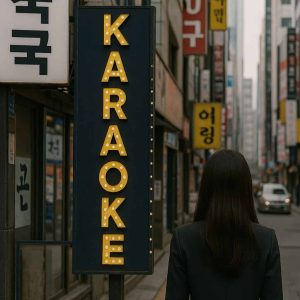 On a Friday night in Seoul’s Gangnam district, the streets glow with neon and the sound of music spills out from karaoke rooms tucked between sleek bars and rooftop lounges. For many, a night of singing with friends is a way to celebrate the week’s end. But behind each private booth and high-end sound system lies a complex story about 강남가라오케 가격, economics, regulation, and the city’s evolving sense of value.
On a Friday night in Seoul’s Gangnam district, the streets glow with neon and the sound of music spills out from karaoke rooms tucked between sleek bars and rooftop lounges. For many, a night of singing with friends is a way to celebrate the week’s end. But behind each private booth and high-end sound system lies a complex story about 강남가라오케 가격, economics, regulation, and the city’s evolving sense of value.
At first glance, the rising cost of a Gangnam karaoke session—often several times higher than in other districts—seems like pure indulgence. But it’s not just about luxury branding. Those prices reflect more profound shifts in South Korea’s economic landscape, especially policies designed to manage inflation, protect wages, and stabilize housing and commercial rents.
These policies ripple through the service sector, influencing everything from the cost of drinks to the hourly rate for a private karaoke room. Yet, in many ways, they also ensure that Seoul’s nightlife industry stays vibrant, fair, and sustainable in the long term.
Inflation: The Quiet Price Driver
Inflation has been one of the main pressures on nightlife pricing in recent years. Following the pandemic, global supply chain disruptions, energy price spikes, and strong domestic consumption all contributed to higher costs. Seoul, as a major urban hub, felt those effects sharply.
For entertainment venues, inflation doesn’t just mean pricier ingredients for cocktails or snacks. It affects electricity bills, imported audio equipment, cleaning supplies, and even the licensing costs for music. A karaoke owner in Gangnam isn’t simply adjusting prices to boost profits—they’re often catching up to rising operational expenses.
However, what’s notable about Seoul’s approach is how policymakers have tried to cushion these pressures. The Bank of Korea’s careful interest rate management has kept inflation in check compared to global averages. And that stability allows nightlife businesses to plan without the chaos of unpredictable spikes.
In this sense, the higher prices in Gangnam don’t necessarily signal instability—they often indicate resilience. Businesses can maintain quality and pay fair wages while still turning a profit.
Wage Laws: Paying Fairly, Singing Proudly
South Korea’s steady increases in its minimum wage have been another key factor shaping karaoke rates. Over the past decade, the government has pursued wage growth as part of a broader effort to improve living standards and boost domestic consumption.
In hospitality and nightlife, where part-time and service jobs dominate, these changes are deeply felt. Higher wages mean that bartenders, servers, and hosts—many of whom are students or young professionals—can earn enough to support themselves in one of Asia’s most expensive cities.
This shift has not only raised hourly rates for private karaoke rooms but also helped elevate service quality. Staff retention is higher, training is better, and the customer experience reflects that.
When you step into a well-run Gangnam karaoke bar today, the attention to detail—the spotless glasses, the smooth playlist system, the polite staff—comes from a workforce that feels valued. Wage laws may lift the price tag, but they also lift morale, service standards, and the overall experience.
Rent Policies and Urban Prestige
No conversation about Gangnam pricing would be complete without addressing real estate. The district’s property values are among the highest in the country, reflecting its status as a center of finance, fashion, and nightlife.
Commercial rent policies, which are partly influenced by the government’s broader urban development strategies, have a direct impact on karaoke room pricing. In Seoul, rent controls and support for small business tenants have helped cushion some of the volatility. Yet in Gangnam, demand for premium spaces continues to drive rents upward.
Still, rather than stifling entrepreneurship, this environment has inspired creativity. Many karaoke businesses have adapted by investing in aesthetics, technology, and differentiated experiences—like themed rooms, gourmet menus, or private concierge service.
It’s a reminder that higher rent not only raises costs but also drives innovation. Each upscale karaoke lounge reflects a kind of economic ecosystem where landlords, city planners, and entrepreneurs negotiate value through design and service.
Finding Balance in the Beat
What emerges from all this is a portrait of balance. Inflation, wage growth, and rent pressures could have easily made nightlife unaffordable or unsustainable. But in Seoul, they’ve instead encouraged smarter business practices and a more professionalized service sector.
For customers, this translates to a higher-quality experience, featuring cleaner venues, safer environments, improved music systems, and more respectful staff. For workers, it means fairer pay and stable employment. For the city, this means maintaining Gangnam’s allure as a global nightlife destination while aligning with national economic goals.
The Positive Side of Price
It’s easy to look at a 100,000-won karaoke bill and sigh at the cost. But behind it lies a story of economic maturity. South Korea has chosen policies that prioritize sustainable growth, equitable wages, and responsible urban management.
Gangnam’s karaoke rooms are a reflection of that choice—a small but vivid window into how macroeconomic decisions shape everyday pleasures.
Prices may rise, but so do standards. And in the soft glow of a private booth, microphone in hand, surrounded by friends and music, you can feel how those policies—abstract as they seem—translate into something tangible: comfort, safety, and joy that’s built to last.
